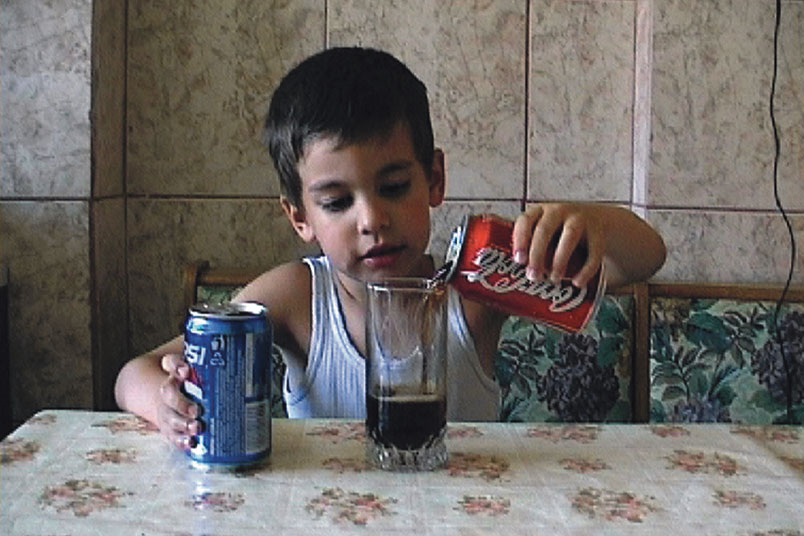-
YTJ at The New Museum
by Stephen Squibb August 28, 2009

In her brief introduction to Younger than Jesus, the inaugural installment of “the New Museum’s new signature triennial,” called The Generational, curator Laura Hoptman remarked on the absence of a hostile generation gap between the so-called millennial generation, and those preceding it. This, we understood, was in contrast to the Baby Boomers who, it seems, never tire of reminding us as to just how oppositional they really were in their day. But not these millennials, as Massimiliano Gioni, another curator, observes, ‘Rather than forswearing their parents, (these artists) seem interested in imagining new communities and alternative families.’Perhaps this is because this is the first generation in which ‘imagining new communities and alternative families,’ does not require forswearing one’s parents. Or perhaps it is not even as clear as all that. Who was it, after all, that declared that self-conscious opposition is the essence of youth anyway? Not only Hoptman and Gioni, but Holland Cotter too seems vaguely uncomfortable, even disappointed at a show that ‘feels awfully sedate and buttoned-down for a youthfest. Kids R Us it ain’t…’

Ciprian Muresan, Choose via New Museum
Thus, no doubt, the widespread love affair with Ryan Trecartin, who, separate from anything else, conforms most readily to the older person’s idea of what it means to be young. All that volume! All that technology! All that speed! And he’s on youtube! Thar be the youts, for sure. Even the obsession with describing the millenials by referencing any number of online/networking apps feels like a top-down operation. What’s more likely to stand out to an old grappling with the intricacies of Twitter than the young’s casual fluency? But this does not a generation define, it is rather only the latest metaphor for encroaching senility and onrushing impotence given a contemporary sheen.
No, more troubling remains the ostensible search for opposition among the young, which dangerously underestimates the extent to which youth became a general cultural fetish during the second gilded age. What, in God’s name, does any young person have to rebel against? Only their own personal failure at not being chosen for the Generational, it would seem. Anyone moving among young artists in the weeks and days leading up to the opening of Younger Than Jesus noticed no spark of opposition, merely widespread sadness at having been considered, as many were, and not chosen; a generation defined by everybody’s desire to represent it.

Ziad Antar,La Marche Turque via New Museum
No doubt their frustration was multiplied when the curtain was thrown back to reveal what is, really, a very good show, highlighted by the other consensus All-Star selection, Cyprien Galliard’s mesmerizing video, which, let me point out, needs no qualification as to the age of its author. It is one of numerous videos that constitute the strength of the show, including excellent work by Ziad Antar, Tigran Khachatryan and Ciprian Muresan; the last of whom’s Choose is an especially elegant metaphor for something, I’m sure. YTJ may end up, once the usual chatter burns off, being remembered as a sort of coming out party for the arrival of video as a dominant medium. (Peter Schjeldahl says something similar)
But returning to the question at hand: perhaps the reason so few of these artists seem out to burn elderly bridges is because so few of them are performing as youngsters here. Ignoring the myriad identity positions not registered on curatorial placards – (imagine: Joe Artist, b. 1983, Boston, largely homosexual, 10 percent Irish, 40 percent German, 50 percent Antiguan, combined parental income at birth: 133k) there are 25 nationalities in play here. With so many artists speaking from positions embedded in the fabric of race, class, gender and nationality, their (relative) youth often seems like the last thing on anybody’s mind.
And this is liberating, in a way. After all, it is always the second-order theme that comes to the fore in a group show, eclipsing the declared intention. Thus when we see Iranian artists, say, grappling with issues of secularism, or American artists concerned with branding, it is these secondary themes that become the story.
By inaugurating its own fountain of youth, the New Museum has also relegated that very conceit to the level of organizing principle, allowing, in some cases, more relevant factors to appear.
More pragmatically, we see the museum granting itself a center position in regards to highly visible career debuts, with potentially game-changing results. The younger artists in the show foolish enough to accept representation at unknown or shady galleries consequent to this exhibition may in fact do so out of the same pressure at fully acclimating to a premature professionalism that the aspiring gallerists who sign them will feel, staking a claim on the newly annexed territory. At first, everyone seems to benefit, and cracks in the edifice are difficult to see. But who, after all, shows up to the debutante ball in any but their finest garments — rented or not?
This is not to say that opposition is impossible, only that it is somewhat strange to ask for it by name while ferreting out its every possible hiding place. I mean, add the Generational to the Whitney Biennale, and what aspiring artist has time to oppose anything? Perhaps the millennials are the first generation to be so completely bought off – perhaps charmed is the more polite phrase – by shows like YTJ. This is not, in and of itself, a bad thing; we do, after all, have to consider the possibility that after years and years of oppositional art practice, the paradigm itself has been neutered by its own success. Not that there is nothing to be opposed to, only that opposition is no longer of the meta-contextual kind, that context having expanded, laudably, to include that which once stood outside, banging out a beautiful rhythm on the barricaded door.


2 Comments
2009 at White Collumns
[...] highlights are here; Dorothy Iannone, Seth Price, Reena Spaulings, and the consensus favorite from YTJ, Cyprian Gaillard’s Desniansky raion. The last was especially gratifying to re-encounter a second [...]
Grammars of Identity: Minimal Differences at White Box
[...] young Polish artist, Anna Molska, who was included in the Younger Than Jesus exhibition last year, revisits the legacy of modernism. In her video Tanagram two men are trying to [...]